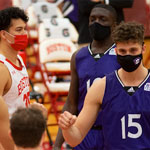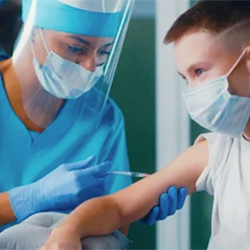By Ethan Covey
Two programs offered at Utah high schools have shown that widely implemented, routine COVID-19 testing allows in-person education and after-school activities to occur at near full capacity, according to a recently released report.

The approach may serve as a framework for other school jurisdictions developing strategies for effectively identifying SARS-CoV-2 infections among students while sustaining in-person instruction and extracurricular activities (MMWR Morb Mortal Wkly Rep 2021;70[21]:785-791).
“This study shows that testing, specifically screening testing, is an important component of overall COVID-19 mitigation strategy to allow for in-person learning and participation in extracurricular activities,” said Kendra D. Babitz, MPP, the COVID-19 state testing coordinator for the Utah Department of Health. “It also demonstrates that it is possible for this screening testing to happen in school settings, where it is most convenient for testing to occur.”
The “Test to Play” and “Test to Stay” programs were implemented in November 2020 and January 2021, respectively. Test to Play mandated testing every 14 days in order for participation in extracurricular activities; Test to Stay involved schoolwide testing to continue in-person instruction as an alternative to transitioning to remote instruction if a school crossed a defined outbreak threshold.
From Nov. 30, 2020, to March 20, 2021, a total of 59,552 students were tested through these programs and 3.2% received a positive COVID-19 test result.
Test to Play, which was implemented at 66% of Utah’s public high schools, allowed for an estimated 95% of scheduled extracurricular winter athletics competition events to take place. Test to Stay, meanwhile, was conducted at 13 high schools in the state and resulted in saving approximately 109,752 in-person instruction student-days.
“Routine screening testing, like Test to Play, is a key part of a multipronged mitigation strategy to ensure that the school setting is safe for in-person learning,” Ms. Babitz said.
“When done in conjunction with mask wearing, physical distancing (when possible) and increased ventilation measures, the risk of COVID-19 spread in schools is low.”
The program was able to help decrease the challenges of physical distancing within school facilities.
“In Utah, we saw fairly good adherence to mask wearing in school settings, but physical distancing is difficult with the large number of students per classroom,” Ms. Babitz added.
“By testing those students and adults who regularly participated in extracurricular activities that were seen as having increased risk for COVID-19 spread, we were able to remove positive cases before spread became problematic throughout the larger school setting.”
In addition, the programs provided incentives for students and their families to follow COVID-19 mitigation guidelines outside of school.
“There needs to be an incentive for people to participate in the testing strategy and to encourage risk mitigation behaviors outside the school setting, like mask wearing,” Ms. Babitz continued. “In the case of Test to Play, the incentive was the ability to participate in the activity with the rest of the class or team. If someone did not get tested or tested positive, they did not get to participate. For Test to Stay, the incentive was for students to remain in school with their friends and teachers and be able to continue having the social interaction that they lack during periods of virtual learning.”
Although the programs showed widespread success, Ms. Babitz noted that continuing them will take coordinated efforts between state and local authorities and schools.
“Both Test to Play and Test to Stay relied heavily on the capacity and desire from school partners to conduct the testing using school staff and time from school activities. However, this has led to testing fatigue now that we are nearing the end of the school year,” she said. “For these testing strategies to move forward into next school year, it is imperative that we shift that burden off of schools and onto state and local public health, or testing will not be possible.”




